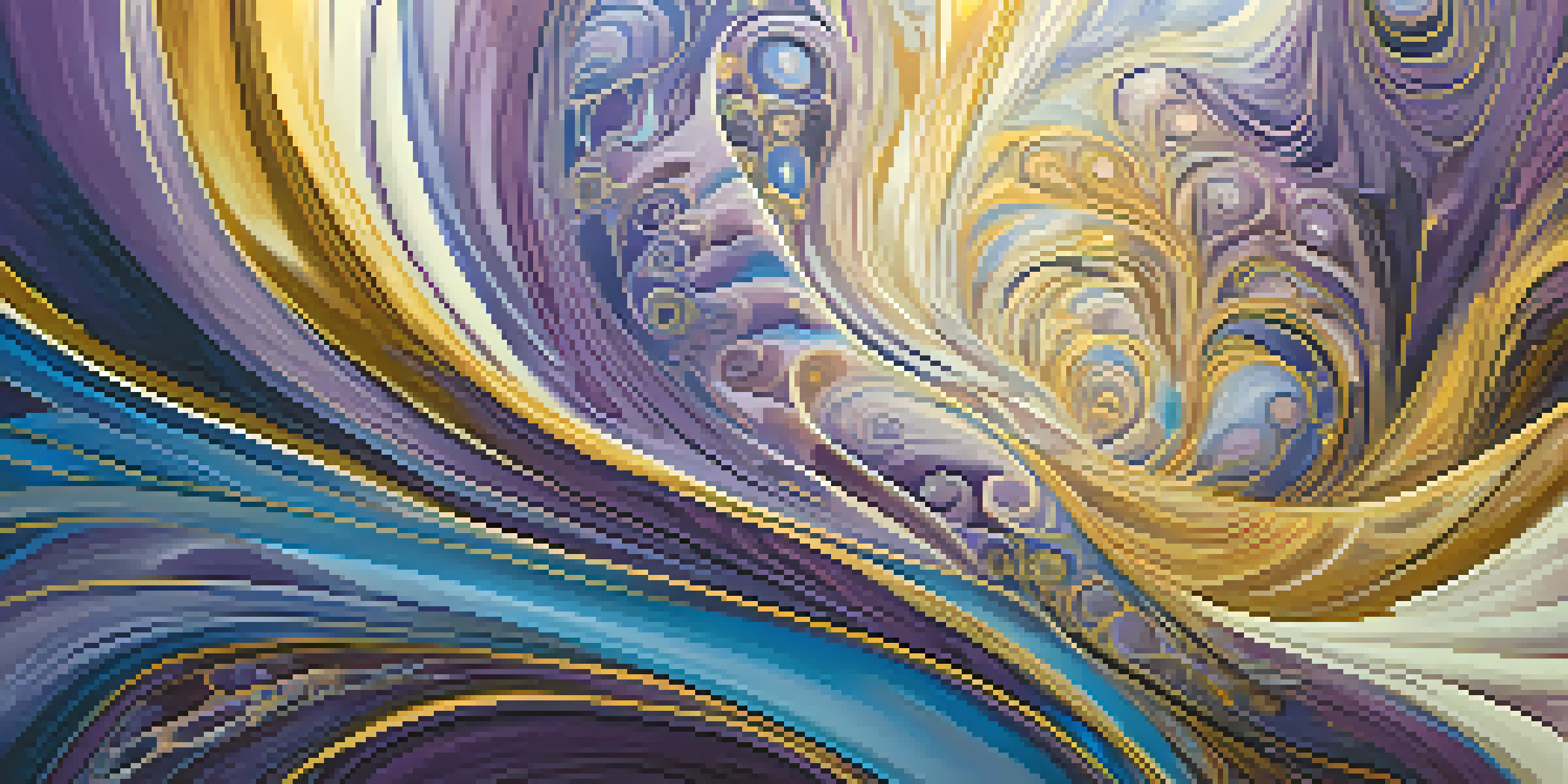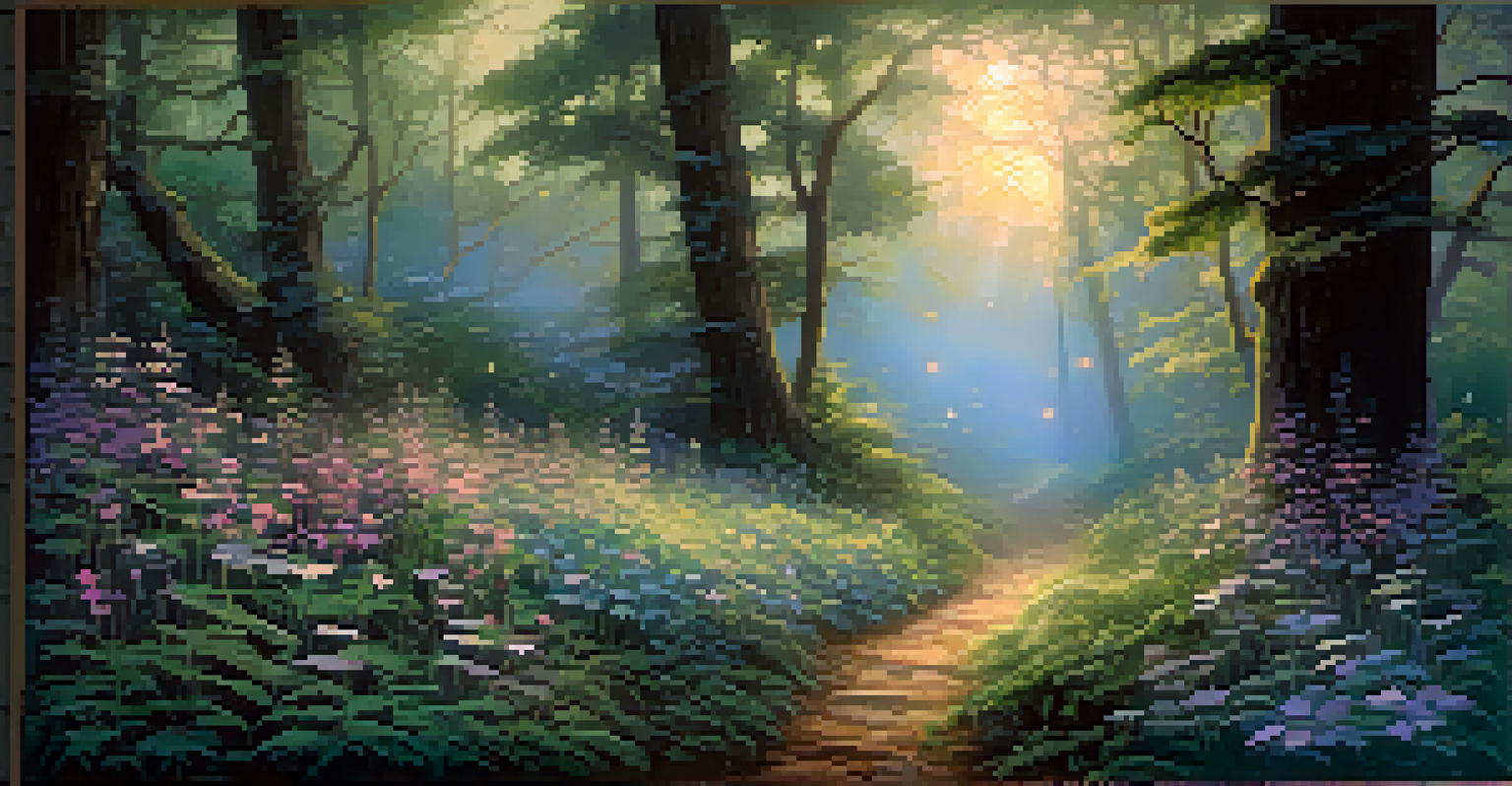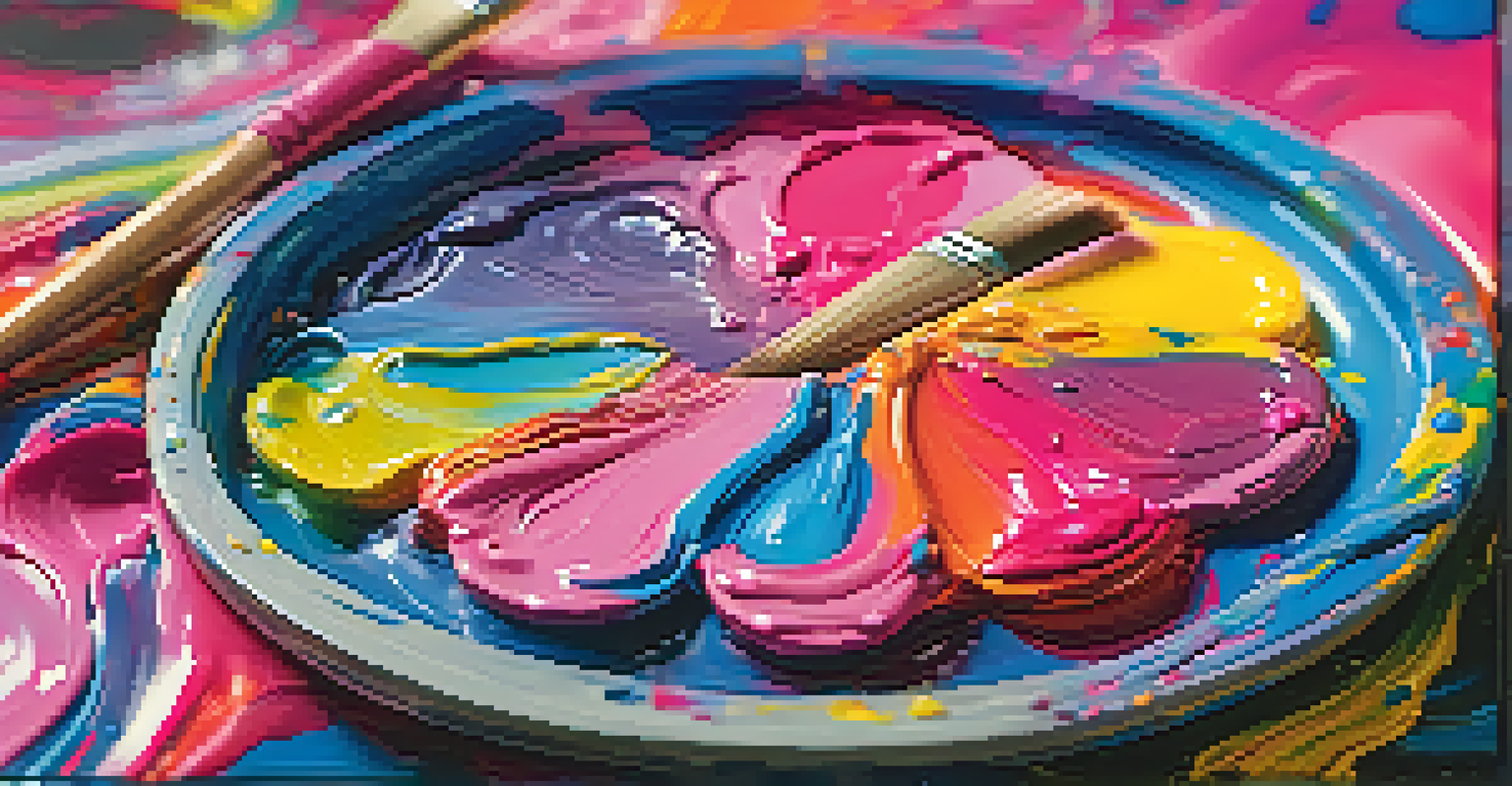Entheogens and Abstract Art: Breaking Conventional Boundaries

Understanding Entheogens and Their Role in Creativity
Entheogens are substances that, when consumed, can induce altered states of consciousness. Often derived from plants or fungi, these substances have been used for centuries in various cultures for spiritual and artistic exploration. Artists have long sought to expand their creative boundaries, and entheogens can provide a unique lens through which to view the world.
The greatest artists are those who can see the world through a different lens, often aided by the visionary paths of entheogens.
When we look at how entheogens impact creativity, it’s essential to understand their effects on perception and thought. Many artists report heightened sensory experiences and a deepened sense of connection to their surroundings. This alteration in perception can lead to innovative ideas and fresh perspectives that are often reflected in their artwork.
Moreover, the experience of using entheogens isn’t just about individual perception; it can foster a sense of unity between the artist and the universe. This collective consciousness can inspire works that resonate on a deeper level, breaking conventional boundaries in art and inviting viewers to explore their interpretations.
The Intersection of Abstract Art and Entheogenic Experiences
Abstract art, characterized by its departure from reality, often embraces the emotional and spiritual realms that entheogens can unlock. Artists like Wassily Kandinsky and Jackson Pollock have created works that reflect the chaos and beauty of the inner experience, echoing the feelings often associated with entheogenic journeys. Through colors, shapes, and forms, they communicate the ineffable, inviting viewers to engage in their personal explorations.

For many abstract artists, the process of creation can mirror the entheogenic experience itself. The act of letting go of control and allowing intuition to guide the brush can lead to unexpected and profound results. This spontaneity is akin to the unpredictability of an entheogenic experience, where the journey can take unexpected turns and lead to new insights.
Entheogens Enhance Artistic Creativity
Entheogens can induce altered states of consciousness, leading artists to experience heightened perception and innovative ideas.
Ultimately, the convergence of abstract art and entheogenic experiences offers a powerful commentary on the nature of reality. It challenges viewers to contemplate their perceptions and encourages an exploration of feelings that may be difficult to articulate, thus breaking down traditional barriers in both art and consciousness.
Historical Context: Entheogens in Art Through the Ages
The relationship between entheogens and artistic expression is not a modern phenomenon; it has roots in ancient civilizations. From the mystical rituals of the Aztecs and their use of peyote to the spiritual ceremonies of indigenous cultures utilizing ayahuasca, these substances have played a vital role in artistic creation. Artists have drawn inspiration from these experiences, creating works that reflect their profound encounters.
Art is the most beautiful of all lies; it can tell the truth about our deepest experiences, including those unlocked by psychedelics.
In the 20th century, the rise of psychedelic culture further blurred the lines between art and entheogenic experiences. Movements like the Beat Generation and the counterculture of the 1960s embraced these substances as tools for personal and artistic liberation. Artists began experimenting with visual language and abstract forms, often influenced by their own experiences with entheogens.
This historical context highlights an ongoing dialogue between art and altered states of consciousness. By examining how past artists have integrated entheogens into their creative processes, we can better understand contemporary practices and the enduring impact of these substances on artistic innovation.
Psychedelic Art: A Genre Born from Entheogenic Influence
Psychedelic art emerged in the mid-20th century as a distinct genre that directly reflects the experiences and aesthetics associated with entheogens. Characterized by vibrant colors, intricate patterns, and surreal imagery, this style captures the essence of altered states of consciousness. Artists like Peter Max and Victor Moscoso exemplified this movement, creating works that resonated with the psychedelic experience.
What sets psychedelic art apart is its ability to evoke a sense of wonder and exploration, mirroring the feelings many encounter during an entheogenic journey. The use of symmetry, fractals, and kaleidoscopic designs invites viewers to transcend ordinary perception and dive into the depths of their imagination. This visual language becomes a bridge to the ineffable, allowing for a shared experience between the artist and the audience.
Psychedelic Art Reflects Inner Journeys
Psychedelic art captures the essence of entheogenic experiences through vibrant colors and intricate designs, inviting viewers to explore their imagination.
As psychedelic art continues to influence contemporary artists, it remains a testament to the power of entheogens in shaping creative expression. This genre not only challenges traditional notions of beauty but also opens the door for conversations about consciousness, spirituality, and the human experience.
Breaking Boundaries: How Entheogens Challenge Artistic Norms
Entheogens have the unique ability to encourage artists to break away from conventional norms in their work. By expanding consciousness, these substances can lead to a reevaluation of what art means and how it should be expressed. This shift allows artists to explore new mediums, techniques, and themes that might have seemed unattainable before.
For instance, the use of entheogens can inspire artists to experiment with mixed media or unconventional materials, challenging the very definition of art. This exploration not only influences the artist’s personal style but can also inspire a broader movement that encourages others to think outside the box. As artists share their experiences, they invite others to join in the journey of discovery and innovation.
Moreover, the integration of entheogens into the artistic process promotes a culture of openness and vulnerability. It encourages artists to express complex emotions and thoughts without the fear of judgment, fostering a community that values authenticity. This sense of shared experience can be transformative, pushing the boundaries of artistic expression and redefining what it means to create.
Contemporary Artists and Their Entheogenic Inspirations
Today, many contemporary artists openly embrace entheogenic experiences as part of their creative process. Artists like Alex Grey and Amanda Sage are known for their vibrant, visionary works that draw directly from their experiences with psychedelics. They explore themes of consciousness, spirituality, and interconnectedness, making their work deeply resonant in today’s world.
These artists often use their platforms to advocate for the responsible use of entheogens, highlighting their potential for personal and societal transformation. By sharing their journeys, they inspire others to consider how these substances can enhance their own creative practices. This advocacy is essential in reshaping societal norms around entheogens and their role in art.
Future of Entheogens in Art
As societal attitudes shift towards entheogens, artists may increasingly embrace these substances to explore themes of consciousness and creativity without stigma.
As the conversation around entheogens continues to evolve, the impact on contemporary art becomes increasingly profound. Artists are not just creating for the sake of aesthetics; they are engaging in a dialogue about consciousness, healing, and the human experience, paving the way for a new understanding of art’s role in society.
The Future of Entheogens and Abstract Art: What Lies Ahead?
Looking ahead, the relationship between entheogens and abstract art is poised to grow even more dynamic. As society becomes more open to discussing the benefits of entheogens, artists may feel empowered to explore these themes without stigma. This shift could lead to a renaissance in creativity, where the fusion of science, spirituality, and art flourishes.
Moreover, advancements in understanding the neuroscience of creativity and the effects of entheogens may offer new insights into their impact on artistic expression. As more research emerges, it could validate the experiences of artists and lead to a greater appreciation for the role of altered states in the creative process. This could pave the way for educational programs that incorporate these ideas into art curricula.

Ultimately, the future of entheogens and abstract art holds the promise of breaking down barriers and fostering a deeper understanding of the human experience. By embracing these substances and their potential, artists can continue to push the boundaries of creativity, inviting everyone to join in this transformative journey.